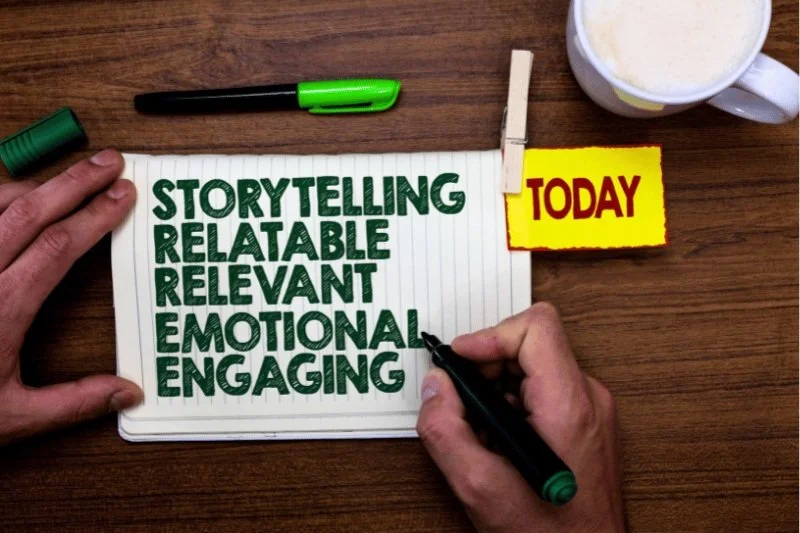How to Create Magnetic Employer Brand Content
Socially conscious HR firms have long known it’s not enough to offer competitive pay and benefits. We knew that before DEI trended, and we know it now—even as some leaders walk back commitments they made only a few years ago.
We’ve said for years: candidates want more than a paycheck. They want employers whose values align with theirs. Meaningful work. Belonging. Growth.
Whether they realize it or not, candidates are searching for companies with socially conscious employer branding. They know, just like we do, that socially conscious is the new compelling™.
Employer branding is a magnet: it attracts the right people by reinforcing the story on your careers page and in your interviews. And one of the best ways to strengthen any magnet is to stack it. And that’s where employer brand content comes in.
What is Employer Brand Content?
If your employer brand is the story of what it’s like to work with you, employer brand content is how you tell that story. It brings your employee experience to life.
It can be career-page copy, authentic employee stories on social, blog posts highlighting your social impact, or a podcast featuring diverse voices with a behind-the-scenes look at your org.
Employer brand content strengthens recruitment marketing. It adds integrity, builds trust, creates genuine connections, and inspires the right people to apply.
It also translates corporate-sounding mission, vision, values, and value-prop statements into heartfelt stories that resonate with job seekers’ desire for purpose and meaning.
Simply put, Employer Brand Content is like a magnet…
Drawing the right people to you as you cut through all the other recruitment noise and stand out as a catalyst, partner, and employer of choice.
Why Do You Need Employer Brand Content?
If there were ever days of insisting your company is all sunshine and unicorns, those days are over. Employee are distracted and disengaged. Candidates don’t expect perfection, but they do expect honesty.
By the time most people apply, they’ve already spent time reading about you. If you want to strengthen your employer-brand magnet so it’s easier to attract, engage, and retain the right people, you need written content. Published consistently.
Employer brand content showcases values and culture, inspires passion for your mission, and gives applicants a realistic view of life after the offer.
The Key to Magnetic Employer Brand Content
Storytelling is the key to creating magneting employer brand content. The human brain is wired for narrative, which helps people pay attention and remember what matters.
A 2021 UC Davis study shows the hippocampus connects separate events into a single narrative.
The NeuroLeadership Institute notes clear narratives cut through distraction, which is basically gold in our attention economy.
Your goal is authenticity and transparency. Storytelling helps you build trust, create genuine connections, and inspire action. It’s the magnet that gives meaning to recruitment marketing by bringing the employee experience to life.
What types of Employer Brand Storytelling Content can you create?
Like your workforce, employer brand content is versatile and dynamic. Publish consistently. Stack the magnets. Each piece strengthens talent and brand marketing.
1. Employee Spotlights and Employee Advocacy Posts
Authentic employee stories can support the narrative you’re marketing to job seekers. When you show your team collaborating on a project, celebrating a success, or participating in a team-building activity, you give recruiters and candidates tangible examples of your values, impact, and culture.
Put a face on your brand. Show projects, wins, learning moments. Train and empower advocates to engage online. 76% of people trust the content shared by individuals over companies. Create a "Meet the Team" series, spotlighting a different employee each week. Talk about their role, career path, and what excites them about their future with your company.
2. Behind-The-Scenes Employer Brand Content
Behind-The-Scenes content provides endless options for using storytelling to bring the employee experience to life. BTS humanizes your employer brand and satisfies curiosity. Because it opens a window into how work really happens, ”BTS captivates audiences and strengthens connections in ways that traditional marketing cannot.”
Share real stories, photos, or videos across multiple recruitment marketing channels to build trust with job seekers. Share the challenges in addition to “the good stuff” to give a realistic preview of roles, culture, and collaboration.
What’s it like to work for you?
3. Long-Form HR Thought Leadership Pieces
Job seekers wonder, "What's it actually like to work there?" Active employees often want to know what other departments or roles look like before they’re willing to admit they’re ready for a change to their manager. In addition to behind-the-scenes content to help address these questions, a day-in-the-life blog post also helps tackle this.
Publish posts, white papers, and op-eds that show your POV on building a just, equitable, sustainable workplace. Encourage leaders to write for relevant outlets and be transparent about policy/lobbying positions when appropriate. Share original or curated research that supports your stance.
4. Industry and Corporate Podcasts
Human, conversational, and memorable, podcasts are another powerful way to amplify and share your employer brand. Consider an internal or public podcast to improve communication, learning, and advocacy.
Corporate podcasts can improve culture, communication, and collaboration, foster trust and transparency, and encourage continuous learning and innovation. Interview leaders, recruiters, employees, and clients to boost productivity, satisfaction, and engagement.
5. HR and Employer Brand Case Studies
Make your storytelling memorable, meaningful, and measurable. Show the problem, process, and outcome—centered on employees, clients, or social impact. Case studies are proof that your company is a force for good (which is exactly what today’s talent wants to join).
Case studies can be incredibly magnetic for socially conscious HR firms that want to attract purpose-and-values-aligned employees and clients. Whether they focus on your clients, employees, or your social impact, case studies are an excellent way to go more in-depth than a traditional blog post or social media spotlight.
Your company isn't just *in* business. It’s a force *for* good business.
Employer Brand Content shows you value purpose, people, planet, then profit
Employer brand content shows you value purpose, people, planet, then profit. Not just in a tagline but in practice.
Imagine adding a short “Meet the Engineers” series to every engineering opening. Or linking candidates to a company hashtag with volunteering photos and a few employee advocates’ profiles. That’s how you prove who you are. Consistently.
By the time most people are ready to apply, they’ve read a lot about you. Don’t rely on third-party reviews alone. Publish your own employer brand content. Consistently.
Ready to turn your culture stories into connection?
If today’s post sparked ideas, let’s use story, strategy, and soul to make them real.
Click here to check out my free employer brand content guide (no string attached or signup needed)
Click here to learn more about HR storytelling services
Click here for more about employer brand content services
Click here for more about translation and localization services for HR
Click here to book a call to chat about your next project or collaboration
In the interest of ethics and transparency, this post was written by BrandWell AI, with AI copyediting by me and ChatGPT. When blogging for myself, I experiment with AI, a lot. Please note that I’m an affiliate with BrandWell and prefer their AI to others I’ve seen for long-form content creation. I may receive a commission if you use this link to sign up for any of their services. Post published February 2025.




